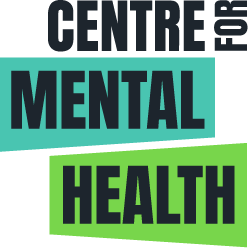Last week, the Government published a long-awaited consultation paper on plans to improve mental health support to schools. The document, Transforming Children and Young People’s Mental Health Provision, set out a range of actions and pledges from the Department of Health and Department for Education to address the now widely acknowledged shortcomings in mental health support for children and young people.
Those plans include a commitment to invest in extra mental health support in schools, to pilot a new four-week waiting time standard for Child and Adolescent Mental Health Services (CAMHS), and to bring more lessons in mental health into the classroom.
Bringing more talking therapies into schools will help to close a big gap in current service provision for children with common mental health problems and to better connect schools and the NHS. This, combined with the proposed four-week waiting time standard for specialist services, should help to ensure that children who get help from specialist CAMHS are seen more quickly. However, it is unclear how much new investments have a chance of closing the true scale of the treatment gap for children who have diagnosable needs but who don’t currently get anywhere near these specialist teams. Neither do we know how much this investment is likely to help those who may sit below thresholds for diagnosis – but who need help with strengthening coping skills to prevent their risk of becoming unwell and drifting into crisis.
It is unclear how much new investments have a chance of closing the true scale of the treatment gap for children who have diagnosable needs but who don’t currently get anywhere near these specialist teams.
But recruiting and retaining people to work in the proposed new mental health support teams will be a major challenge. And there is little recognition of the role of the broader landscape of support for children and young people’s mental health, much of it in the voluntary sector or local government.
We are concerned that the proposals in the green paper do not go as far as they should to offer help to those at greatest risk. There is very sparse mention in particular of early starting behavioural problems, of their importance to a child’s health and life chances, and of the parenting interventions and family based interventions that can make a world of difference.
Behavioural problems are by far the most common mental health problem facing children and young people. They are certainly the most costly problems in terms of the scale, range and duration of their consequences. And they are much more likely than other mental health problems to be misinterpreted, including in schools, often being seen as something which calls for a punitive rather than a therapeutic response. The result for many children is the prospect of lifelong disadvantage.
We are concerned that the proposals in the green paper do not go as far as they should to offer help to those at greatest risk.
The green paper seeks not just to improve access to help for those with mental health difficulties but to build the capacity of schools to promote good mental health and identify those who need support. This is a welcome new approach that will require a lot of support (and resources) to help schools to navigate. It is not enough to ‘incentivise’ schools to appoint a ‘senior lead’ for mental health at a time of significant financial pressures. And it is disappointing that the green paper dismisses Social and Emotional Learning programmes despite the strong evidence of their benefits – one of the few examples of a universal mental health promotion programme that has been shown to be cost-effective. Dismissing this evidence on the importance of building social and emotional skills risks missing a critical opportunity to build the wellbeing and resilience of all our children.
It is vital that the Government commits to closing the gap for the young people who face mental health inequalities either in childhood or as they move into adult years. While the green paper acknowledges this in some respects, it misses some key groups – namely those young people from some ethnic communities who face higher risk of poor mental health as they move into adult years. This is a critical missed opportunity that needs to be grasped: earlier this year we called for a ‘concordat’ to bring about coherent and sustained action to address race inequality in mental health, particularly among young people. There is also little recognition of the fact that children from the poorest 20% of households are four times more likely to have a mental health difficulty as those from the wealthiest 20%. This has major repercussions for a wide range of policies and public services.
It is not enough to ‘incentivise’ schools to appoint a ‘senior lead’ for mental health at a time of significant financial pressures.
The green paper could also have been an opportunity to better connect primary care and other ground level services working with families, from maternity onwards, to support parental mental health and work with whole families when a parent has a mental health difficulty. Schools can be a valuable link for parents to seek help for their own mental health and the new mental health support teams could play an important part in making the right connections for them, too, for example with voluntary and community sector services for the benefit of children.
The green paper does include a welcome pledge to establish a new working group to look at mental health support for 16-25 year olds. This is an age group less likely to seek help yet with evidence of very high levels of distress (particularly among young women) in recent national surveys. The working group must include young people from a wide range of backgrounds in order to co-produce solutions that will really make a difference. Recent reports from Centre for Mental Health that have been co-produced with young people (Against the odds and Unlocking a different future) demonstrate just how much value this approach can give.
The green paper misses some key groups – namely those young people from some ethnic communities who face higher risk of poor mental health as they move into adult years
For too long, we have left children’s mental health to chance. Families and schools have been left not knowing what to do. Many have struggled to get any help when a child is in difficulty until they reach a damaging and costly crisis. And young people have too often found the help available too remote, too clinical and too stigmatising.
Bringing more mental health support into schools is a big step in the right direction. It signals that supporting children’s mental health is as important as promoting their physical health. And it should help to close the gap between schools and health services that have left too many children without the right help at the right time. It is now vital that we take action in every school so we no longer miss the vital opportunities to give children a better start in life, wherever they live.


